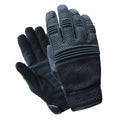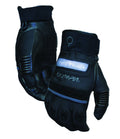Glove Company Tips: How To Add Touch Screen Gloves To The Mix
Posted by ROGER HEUMANN
Has your glove brand added touchscreen technology to new styles in the development pipeline?
It’s a logical addition: With touchscreen technology impacting every product category from iphones to automobiles, touch is an increasingly important feature in daily life.
Whether you are developing new glove styles, or revamping older ones …
Here’s a look at the latest touch technology available to glove brands and manufacturers, for the fashion and sports glove categories.
Touch Adoption: Beyond iPhones
Initially, touch screens disrupted just a few categories, like iphones, tablet computers, and GPS devices.
Now, “touch” technology is everywhere: automotive dashboards, motorcycle controls, appliances, vending machines, banking — in essence, all the technology that powers modern life, both in and out of doors.
As a result, touch screen gloves are fast becoming the standard. Is your brand ahead of this curve?
How should glove brands and glove manufacturers respond?
Currently a touchscreen glove is a “nice to have” product feature.
But ask yourself: Are your customers happy taking their gloves off to swipe, scroll and tap? Holding one glove under an arm or in between teeth while the ungloved hand gets very cold is so yesterday.
In our view, the time to add conductive fingertips and make your gloves 100% touch enabled is NOW.
There are a growing number of choices for conductive fingertips on gloves — conductive leathers, as well as man made materials, conductive threads for woven fabrics, and more.
Here’s how to go about upgrading your gloves with this feature.
Touch Screen Glove Materials: Leather and Non-Leather Options and Costs
Many customers ask us how to go about incorporating this product feature, and stay within glove cost targets.
Here are some constraints and trade offs to keep in mind as you add this feature:
- Bigger is Better: The bigger the area you make the touch screen area the better the results will be. We are now putting conductive materials on the tip and also the TOP of fingertips.
- Leather or Synthetic? Obviously leather is the most expensive option. When cost is a constraint, synthetic PU materials are also conductive and are at least 50% less in cost than leather.
- Conductive Fabrics? Conductive fabrics like copper infused lycra are also expensive — and usually need to have a direct contact with the hand to work well.
- Material Innovations: Fleece is the newest material to become conductive — but right now those costs are high. Buyers may want to wait for the cost to drop a bit.
Takeaway for Glove Buyers:
Clearly it’s an advantage for your customers to keep gloves on and use a device or tough screen interface.
-
As you work on development going forward, touch screen technology is accessible at every glove price point and fabrication.
- Don’t neglect older styles that may need an update — Adding this feature adds “news” and can help breathe new life into an older style.
- FOR EXAMPLE: We updated four styles in our Olympia brand product line in 2014 — 2 spring gloves, and 2 winter gloves — all with touchscreen technology as well as other updates. The upgraded styles are doing very well, and we plan to make this feature standard going forward.
Talk to your glove company, or a leading leather supplier like Pittards and other materials suppliers, to learn more about the trade-offs and cost implications of the various options.
You May Also Enjoy:






















